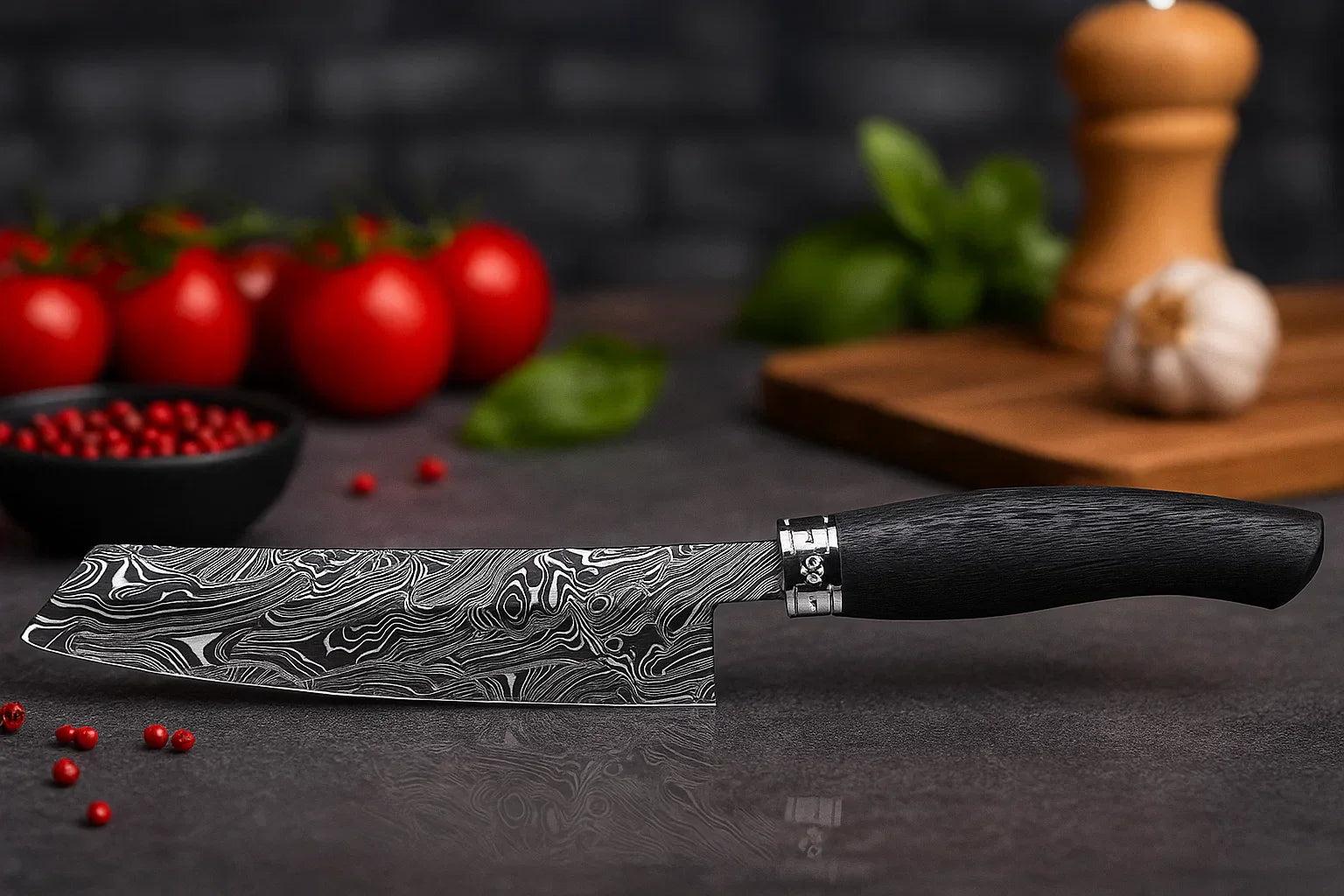Your Cart is Empty
FREE SHIPPING FOR USA

Whether you're a professional chef, a passionate collector, or an outdoor enthusiast, selecting the right Damascus knife goes beyond picking a pretty pattern. A real Damascus knife offers a unique blend of performance, artistry, and durability—but with so many imitations on the market, it's easy to be misled.
Damascus steel is not a single material but a pattern-welded steel made by folding different types of steel together. The result? A visually captivating wavy or swirled pattern combined with a blade that balances hardness and flexibility.
Traditional Damascus (also known as Wootz steel) originated in India and the Middle East. It involved crucible steel and had a watered pattern due to carbon nanostructures.
Modern Damascus is made by forge-welding multiple steel types like 1095 high carbon steel and 15N20, folded repeatedly for layered strength and beauty.
Key Takeaway: Real Damascus today doesn't come from ancient methods but aims to replicate the durability and patterns using modern metallurgical techniques.
Not all patterns mean it's real Damascus. Many cheap knives are acid-etched to simulate Damascus waves.
How to verify:
Look for irregular, organic patterns that continue through the spine.
Examine the cross-section if possible—real Damascus will show pattern layers even in the tang or spine.
Avoid knives with printed or uniform designs.
Authentic Damascus knives use a blend of steels:
High Carbon Steel (1095, 1080): Offers hardness and edge retention.
Nickel-rich Steel (15N20): Adds contrast in pattern and toughness.
Key Questions to Ask:
What steel types were used?
How many layers were forged?
Is there a hardened core (san-mai structure)?
Genuine performance-driven Damascus blades often have a hardened steel core (e.g., VG-10, AUS-10) sandwiched between Damascus layers.
Benefits of Core Steel:
Long-lasting edge retention
Easier to sharpen
Prevents chipping from the harder Damascus overlays
Function matters more than form. Look at:
Spine thickness
Grind type (hollow, flat, convex)
Edge bevel
A real Damascus blade should provide balance between slicing and chopping.
Full tang knives provide better strength and balance.
Partial tangs may reduce durability, especially in outdoor knives.
Inspect if the tang is visible through the handle and matches the blade’s pattern.
Micarta – Waterproof, grippy, ideal for tactical or outdoor use
Walnut Wood – Elegant and classic, used in kitchen knives
G10 / Resin – Modern, durable, and available in color variations
Antler / Bone – Aesthetic, traditional, and collectible
Comfort in hand (ergonomics)
Slip resistance
Seamless fit and finish
Riveted or pinned construction
A poorly finished handle can cause fatigue or even injury during extended use.
Damascus Steel Chef Knife: Prioritize blade balance and fine edge
Outdoor Knife: Look for spine thickness and toughness in hunting and Damascus bowie knives.
Collector’s Knife: Focus on aesthetics, pattern uniqueness, and handle material
Gift Knife: Include presentation elements like a leather sheath or engraving
A reputable brand should offer:
Details about the forging process
Return or exchange policy
Lifetime or limited warranty
Uniform or printed patterns
No information on steel types or layer count
Stainless steel with fake etching
Absence of branding, logo, or warranty
Generic online marketplaces with no maker transparency
Sellers who cannot answer technical questions
Pro Tip: Purchase from verified brands like Jun Knives, which provide full transparency on materials, craftsmanship, and forging methods.
Hand-wash only (no dishwasher)
Dry immediately after washing
Apply food-safe mineral oil after each use
Use a knife block, magnetic strip, or a leather roll (like those offered by Jun Knives)
Avoid damp environments
Choosing a real Damascus knife is about respecting tradition, appreciating quality, and understanding what sets genuine craftsmanship apart from mass-produced imitations. By following this buyer’s checklist, you ensure your knife is not only beautiful, but also functional and long-lasting.
If you're looking for a forged knife that's both a tool and a legacy, shop hand-forged blades from brands like Jun Knives that honor both heritage and high performance.
High-carbon steels like 1095 paired with nickel-rich steel like 15N20 are widely used for performance and pattern contrast.
Layer counts vary, but quality Damascus knives typically have 200+ layers. More layers often result in finer, more intricate patterns.
Not always. Acid-etching is used on real Damascus to enhance visibility, but if the pattern doesn’t run through the steel, it may be fake.
Yes—if properly maintained. They offer excellent sharpness and cutting control, but must be hand-washed and oiled regularly.
Ask about steel types, forging process, warranty, and look for pattern continuity along the tang and spine.